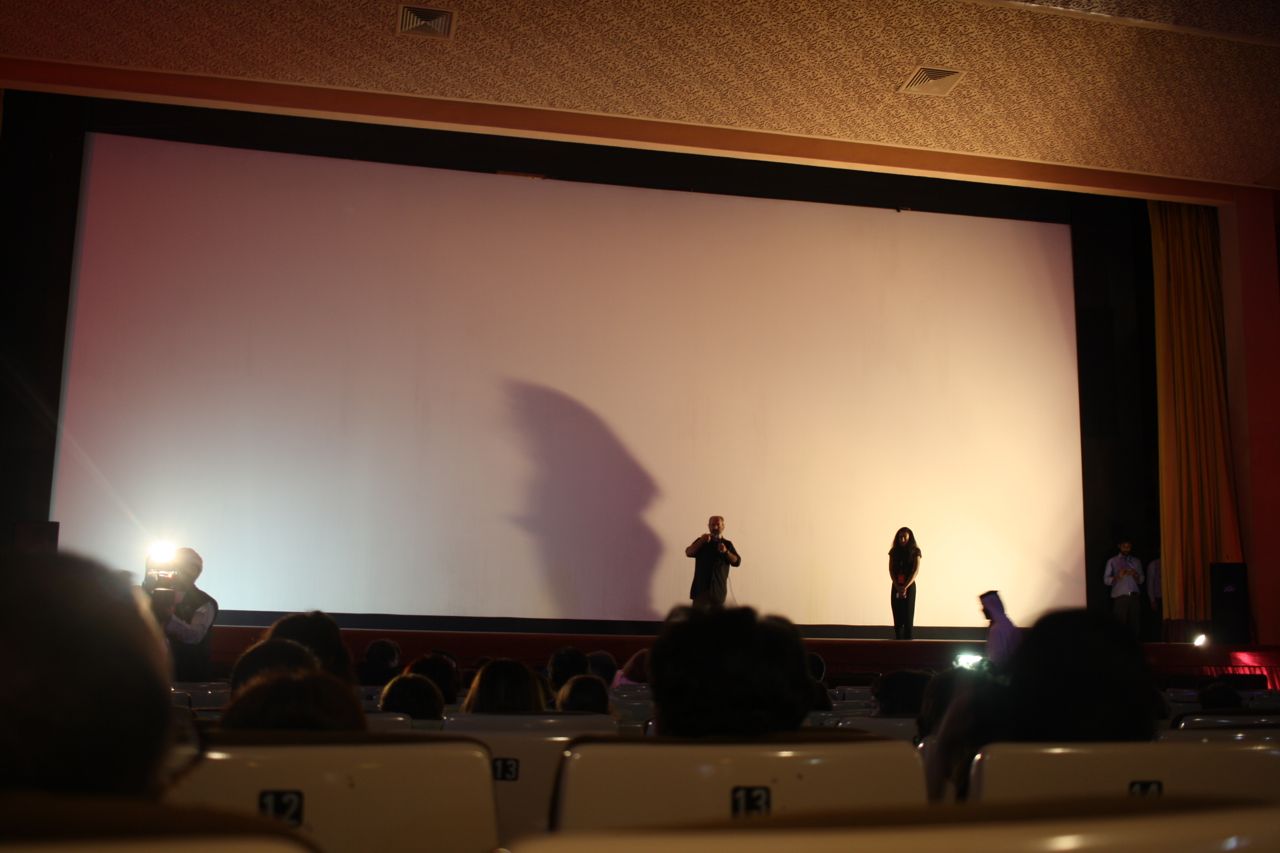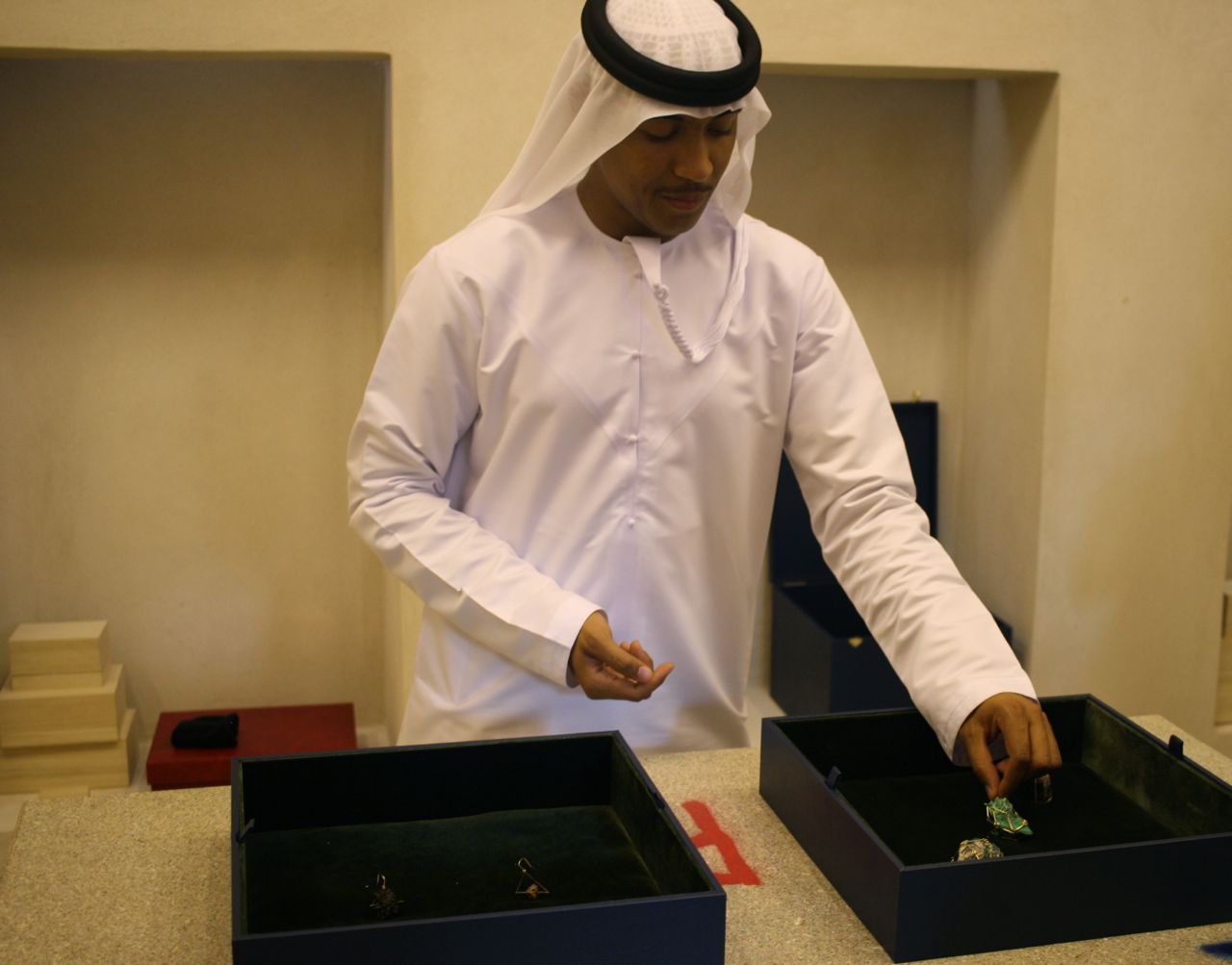Shows
Sharjah Biennial 13, Tamawuj: Day 1

“Tamawuj,” the title of Christine Tohmé’s Sharjah Biennial 13, has three meanings in Arabic: “a rising and falling in waves”; “a flowing, swelling, surging or fluctuation”; and “a wavy, undulating appearance, outline or form.” The first meaning came to mind when Tohmé took the stage to welcome guests to the Biennial, gave her thanks and made reference to “recent sociopolitical events.” It wasn't necessary to ennumerate them—and it became evident during the first day of conversations and performances that the collective feeling at the moment is definitely not one of riding on top of the waves.
The opening-week program of Sharjah Biennial 13 combines the debut of the Biennial, with works by more than 70 artists—among them the premiere of 32 new projects—and the discursive events of the annual March Meeting. The first discussion on the morning of Friday, March 10, was titled “Desiring Institutions.” In the words of moderator Charles Esche, who is director of the Van Abbemuseum in Eindhoven, it looked at what institutions make possible and what they protect at a time when there is a “maelstrom of destruction around us.”
The first presenter, Binna Choi, who is director of Casco in Utrecht, is involved with a group called the Arts Collaboratory, which links up “small- and medium-scale” institutions around the world. Citing the critical situation in institutions after the 2008 global financial crisis, her presentation looked at “how institutions think,” and attempts to model their relationships using the idea of the “three body problem” from astronomy—which, simply put, is a way of recognizing that no two bodies are in motion only with one another (the earth and moon, for instance) but also with other bodies as well (the sun). More specific was Ala Younis, who took her own projects as an example of individuals "filling in the spaces between institutions," including the preservation and cataloguing of old Soviet-era films, and the difficult decisions made in her nonprofit publishing project Kayfa ta. Younis’s partner in Kayfa ta, Maha Maamoun, then spoke about her own experiences as a founding member of the Contemporary Image Collective (CIC) in Cairo and the organization’s struggle to navigate the shifting cultural and political landscape of Egyptian capital, particularly since the uprising of 2011, when cultural institutions have had to adopt survival strategies to fend off threats and legal hurdles, while changing internal structures to reach new publics. There was more to be discussed than time allowed (things had started late because the press conference was so crowded), but Esche implored moderators in the coming days to return to certain ideas about audiences, ethics and ecosystems for institutions, particularly around the idea of how organizations are, or can be, “institutes of meaning.”

We returned to water in Mario Garcia Torres’s lecture-performance Five Feet High and Rising (2017). Accompanied by a DJ on stage, the Mexico City-based artist began by reflecting on the greenery outside of his studio window, once the banks of a river and now a highway. This hymn on a meandering (like a river) chain of metaphoric or literal associations of trivia about rivers around the world, interspersed with images of famous Hollywood movies that featured rivers—particularly the Rio Bravo (also known as the Rio Grande) and the Nile—and pop songs that related to water, from Nina Simone’s “Mississippi Goddam,” (though, I think that song is about the US state, not the river per se), Talking Heads’ “Take Me to the River” and even Justin Timberlake’s “Cry Me a River.” Torres’s lecture culminated with prosaic thoughts along the lines of his being "more interested in metaphors and our desires" and that he “drift[s] in reality on a daily basis.” It struck me that rivers aren't cycles, flow in one direction, and have ripples but not waves, which seemed like small metaphorical consolation.
One of the real treats of SB13’s first day was watching Ossama Mohammed’s black-and-white film Khutwa Khutwa ("Step by Step," 1978) projected on the massive screen in the classically styled al-Hamra Cinema. The film, Mohammed’s first, was shot in his home village of Rama, in the mountains near Latakia, and follows a boy who ventures to the city, portrayed on May Day, with the large billboards of the face of Hafiz al-Assad and speakers broadcasting paeans to the workers, urging them to join the navy. In a humorous but awkward Q&A session afterward, which the filmmaker moderated himself on a gigantic stage, he noted the “mentality of the time was very small, we couldn’t talk about very much,” and described with obvious despair that while he was filming, the Syrian army was intervening in Lebanon and attacking Palestinian refugees living there.

There wasn’t much time on this day to look at the art installed in the many spaces around the Sharjah Heritage districts; I'll cover that in the coming days. But in Bait al-Serkal in Art Square there were a couple that immediately stood out. Most unavoidably, Oscar Murillo had deconstructed the interior courtyard, ripping up the bricks on the ground and stacking them to block many of the windows that surround the courtyard, and then digging trenches where he partially buried his canvases in order to, in his description, “activate the canvas in a way that is beyond a stretcher.” (There was also a metal-framed construction from which were hanging other tar-soaked canvases, and other paintings spread out on the ground, in a massive spatial expansion of expressionist painting.) Demolition was the subject of Shadi Habib Allah’s film and installation 30KG Shine (2017), which comprised a series of disfigured chandeliers on the ground and, when I walked in, featured someone sledge-hammering through a basement wall and removing furniture from an apartment, and then scenes of Palestinian workers laboring on a massive underground "tunnel cemetery" that is being excavated in Jerusalem and a mysterious slime-blob that slithers down a Jerusalem street. In an adjacent room, Christodoulos Panayiotou’s Untitled (2017) featured an alter-like marble tabletop (still spray-painted with markings from the quarry) on which a rotating duo of performers were continually presenting and modelling a selection of beautifully crafted jewelry made from rare crystals called “pseudomorphs.” The ritual of taking the plain boxes one at a time from shelves behind them and opening them to reveal the jewelry was hypnotic in its evocation of our desires and curiosity. One of Panayiotou's pieces is apparently also located in the display cases of al-Romaizan jewellry shop in Sharjah's Central (Blue) Souq.

Closing out the evening, after the awards ceremony—where Dineo Seshee Bopape, İnci Eviner, Uriel Orlow and Walid Siti took home the Biennial’s prizes—was a musical theatrical piece, Close to Here, directed by Roy Dib. The story features a lamenting mother stitching together the rugs in her house to form curtains, which she believes will block the views of snipers who have claimed the life of her 12-year-old daughter. Her husband had already been lost in an unnamed war, and she is mentally prepared to send her son off to fight as if it was also his funereal. The deceased daughter and a radio presenter interrupt to present quotes of "goodwill" from international celebrities like Angelia Jolie, and cynical takes on the indifference of Arab leaders to their citizens' demands and the cycle of violence fueled by international arms sales, as well as the false consciousness of international NGOs that try to reform societies wracked with violence. These were deep troughs in the waves, and unfortunately all too familiar.
HG Masters is editor-at-large of ArtAsiaPacific.
To read more of ArtAsiaPacific’s articles, visit our Digital Library.







